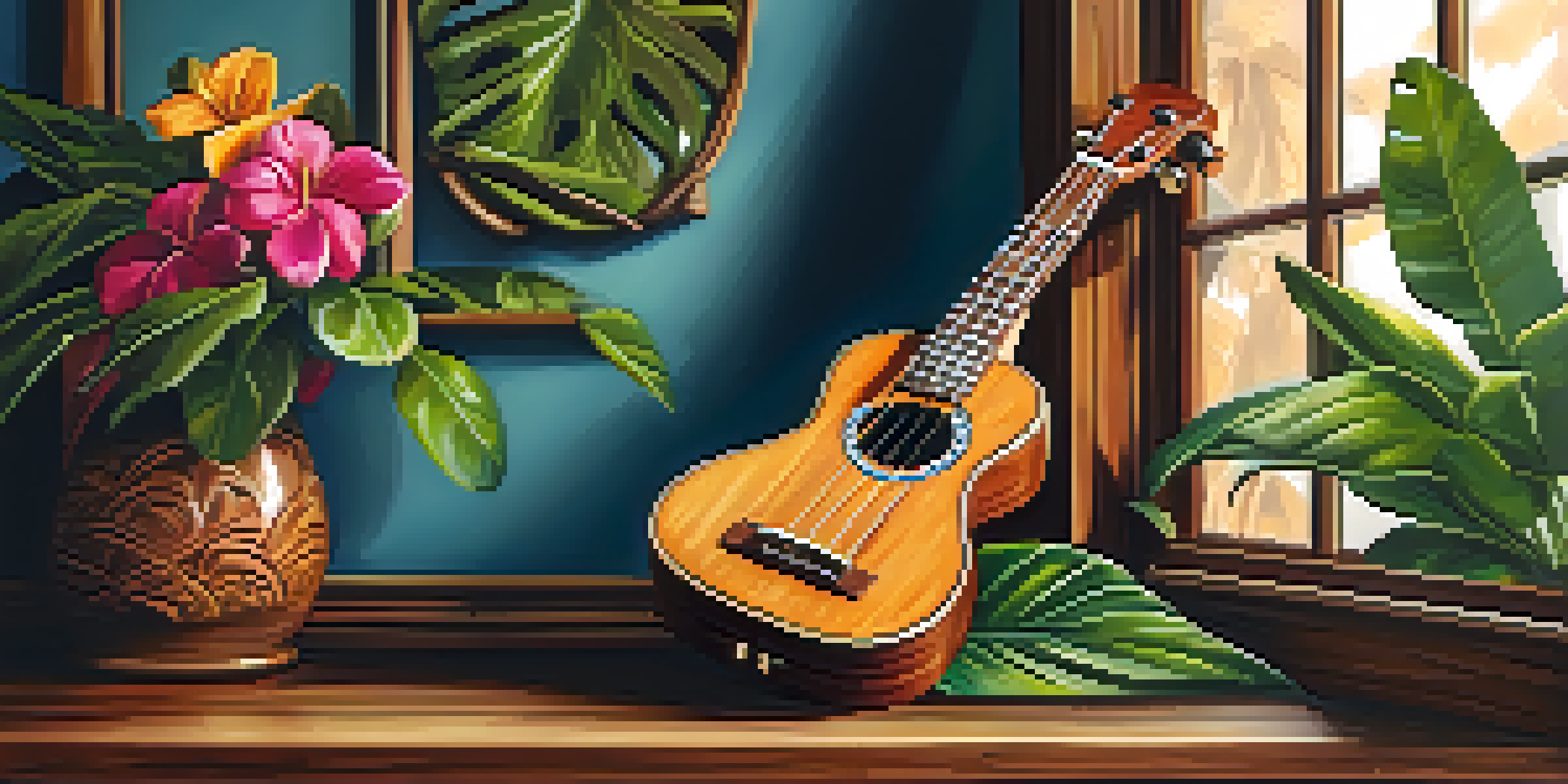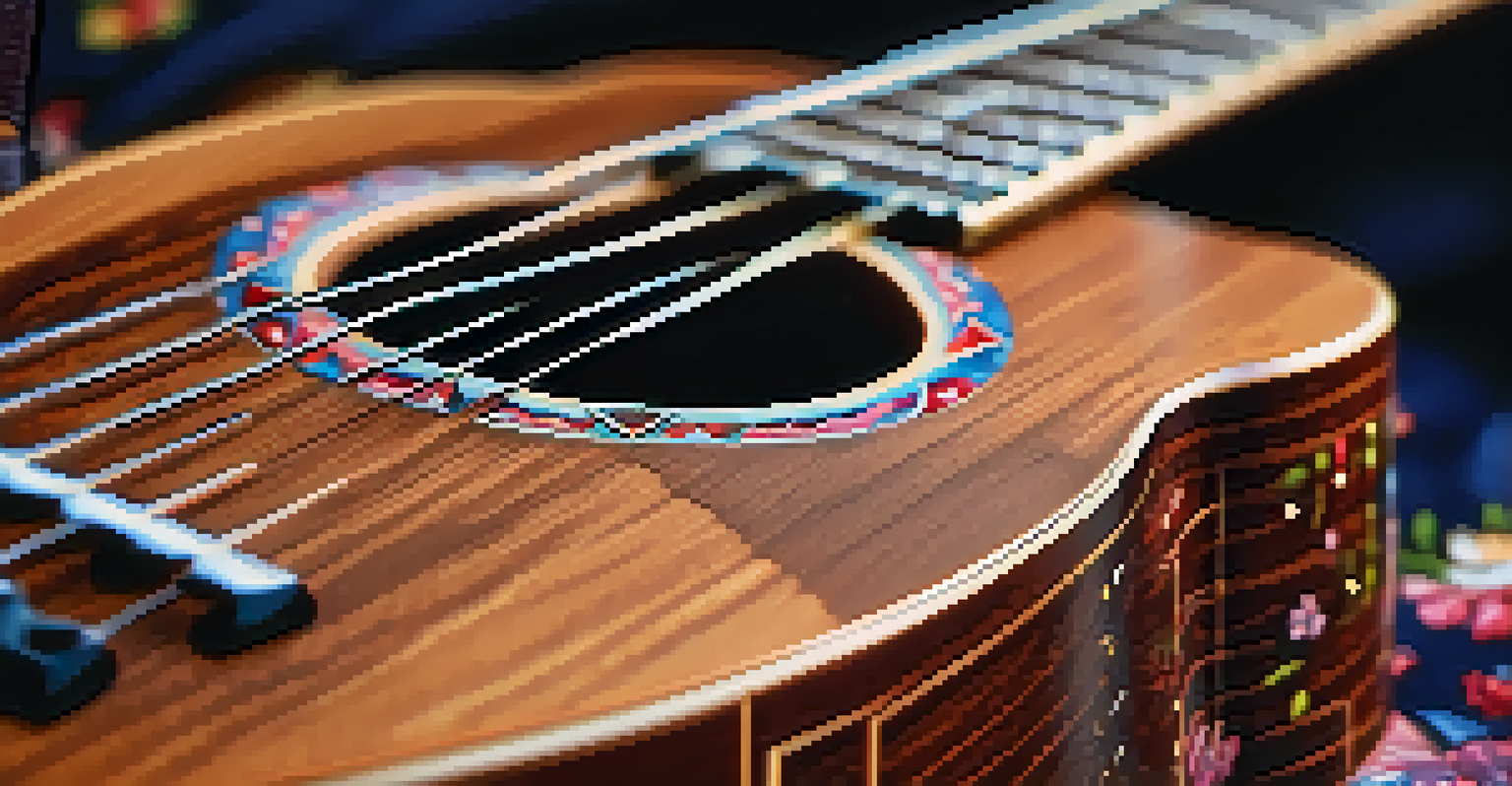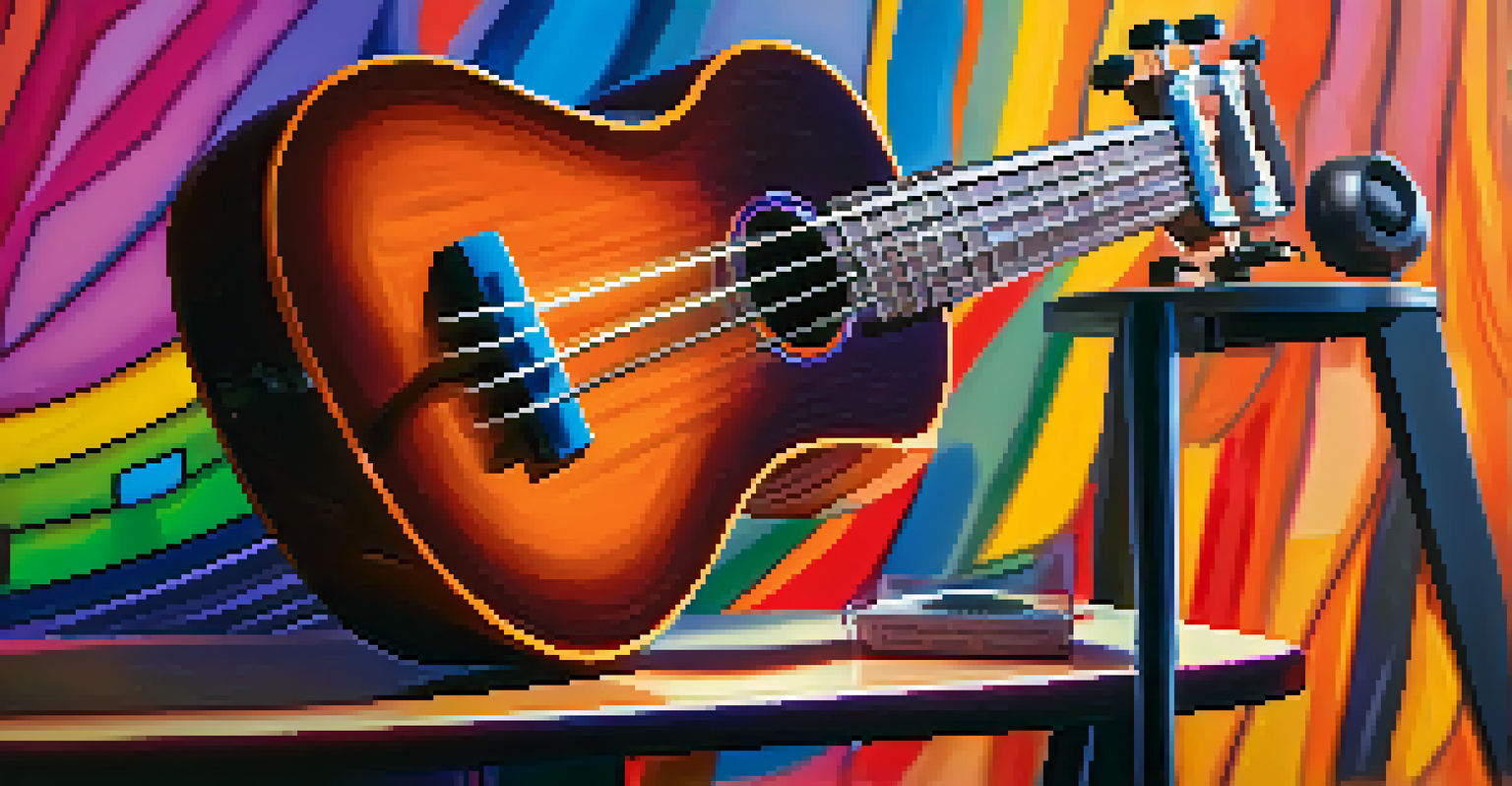Fretboard Innovations in Ukulele Design Over the Years

The Origins of the Ukulele: A Brief History
The ukulele, often associated with Hawaiian music, has roots that trace back to the late 19th century. It was inspired by the Portuguese braguinha, which made its way to Hawaii through immigrants. The instrument quickly gained popularity, becoming a staple in Hawaiian culture and beyond.
The ukulele is the perfect instrument for music lovers of all ages, offering a joyful experience that transcends boundaries.
Initially, ukuleles were crafted from local woods, emphasizing a natural aesthetic. These early designs featured simple fretboards, usually with fewer frets, making it accessible for beginners. This laid the groundwork for the ukulele as a beloved instrument worldwide.
As the ukulele spread across the globe, its design began to evolve, paving the way for innovations in fretboard construction and materials. Musicians started experimenting with different shapes, sizes, and configurations, leading to the diverse range of ukuleles we see today.
Fretboard Materials: From Wood to Composite
Traditionally, ukulele fretboards were made from hardwoods like rosewood and mahogany, prized for their durability and tonal quality. These materials not only enhanced the sound but also contributed to the instrument's aesthetic appeal. However, as demand for ukuleles grew, manufacturers sought alternatives to meet various player needs.

In recent years, composite materials have emerged as a popular choice for fretboards, offering benefits like increased durability and resistance to humidity. These materials can mimic the look and feel of traditional woods while providing a more consistent playing surface. This innovation has expanded the market, making ukuleles accessible to a wider audience.
Ukulele's Rich Historical Roots
The ukulele's journey began in the late 19th century, evolving from the Portuguese braguinha brought to Hawaii by immigrants.
Moreover, the use of sustainable materials has become a priority for many manufacturers. Eco-friendly options not only appeal to environmentally-conscious musicians but also contribute to the longevity of the instrument’s appeal, ensuring that the ukulele remains a beloved choice for generations.
Fretboard Design: The Shift to Wider and Curvier Shapes
As players' preferences evolved, so did the shape and design of ukulele fretboards. Wider fretboards have become increasingly popular among musicians seeking comfort and ease of play. This shift allows for more intricate finger placements, making it easier to play complex chords and melodies.
Music is the shorthand of emotion, and the ukulele allows us to express our feelings in a unique and personal way.
Curvier fretboards have also gained traction, catering to the needs of more advanced players. These ergonomic designs not only enhance playability but also contribute to a more natural hand position. This innovation has made the ukulele an instrument of choice for both beginners and seasoned musicians alike.
The evolution of fretboard design reflects the growing diversity of ukulele players. With more options available, musicians can find a ukulele that suits their individual style and playing technique, ultimately enriching their musical experience.
Fret Markers and Inlays: Aesthetic and Functional Advances
Fret markers and inlays have evolved from simple dots to intricate designs, adding both beauty and functionality to ukulele fretboards. These markers serve as visual guides, helping musicians navigate the fretboard with ease. With creative designs ranging from floral patterns to geometric shapes, fret markers have become a reflection of personal style.
Manufacturers have also experimented with materials for these inlays, moving beyond traditional mother-of-pearl to include materials like abalone and even glow-in-the-dark options. These innovations not only enhance the aesthetic appeal but also allow players to express their individuality.
Innovative Fretboard Materials
Fretboards have transitioned from traditional woods to modern composites, enhancing durability while catering to diverse player needs.
As the trend of customization grows, many builders now offer personalized inlay options, letting musicians create a truly unique instrument. This blend of function and artistry has made the ukulele not just a musical tool but also a canvas for self-expression.
The Rise of Electric Ukuleles and Fretboard Design
The introduction of electric ukuleles has revolutionized the way players approach fretboard design. With the ability to amplify sound, these instruments have opened new avenues for creativity and experimentation. Electric ukuleles often feature modified fretboards, incorporating elements that cater to electronic performance.
For instance, some electric ukuleles come equipped with built-in effects and tuners, requiring specific fretboard configurations. These innovations allow players to explore different soundscapes, blending traditional ukulele tones with modern genres like rock and pop.
As a result, the electric ukulele has attracted a new generation of musicians, eager to push the boundaries of what this beloved instrument can do. This evolution demonstrates how fretboard design continues to adapt to the changing landscape of music.
Customization and Personalization in Ukulele Fretboards
In today's market, customization has become a key trend in ukulele design, especially when it comes to fretboards. Players are increasingly looking for instruments that reflect their personal style and playing preferences. This desire for individuality has led to a surge in customizable options, from unique fret markers to personalized shapes.
Many builders now offer bespoke services, allowing musicians to design their ideal fretboard. This can include selecting materials, inlay designs, and even the number of frets. Such level of personalization not only enhances the player's connection to their instrument but also results in a one-of-a-kind creation.
Customization for Personal Expression
Musicians increasingly seek personalized fretboards, allowing them to create unique instruments that reflect their individual styles.
Ultimately, this trend of customization highlights the importance of personal expression in music. By tailoring their ukuleles to fit their unique styles, musicians are not just playing an instrument; they are telling their own stories through music.
Future Trends: What's Next for Ukulele Fretboard Design?
As technology continues to advance, the future of ukulele fretboard design is exciting and full of potential. Innovations in materials, such as carbon fiber and smart technology, could lead to even more durable and versatile instruments. These advancements may also allow for features like built-in tuners and digital interfaces directly on the fretboard.
Sustainability will likely remain a driving force in the design process, with manufacturers seeking eco-friendly options to minimize their environmental impact. This commitment to sustainability could result in new materials and construction techniques that maintain the ukulele's charm while also being kind to the planet.

As we look ahead, the ukulele's evolution will undoubtedly continue to reflect the creativity and diversity of its players. With an ever-expanding range of options available, the ukulele will remain a vibrant and dynamic instrument in the music world.